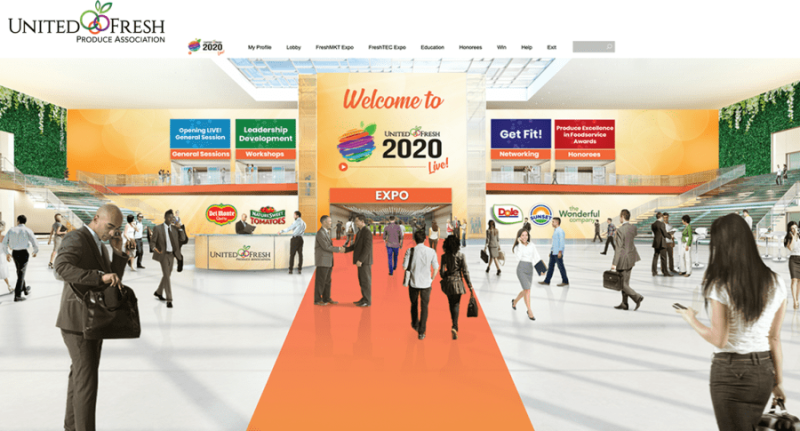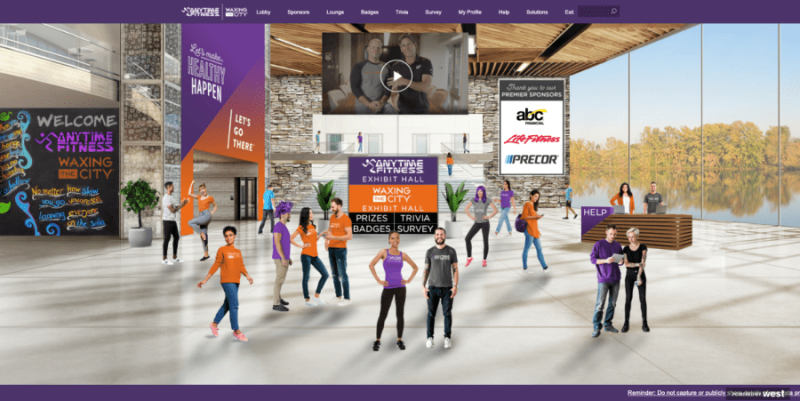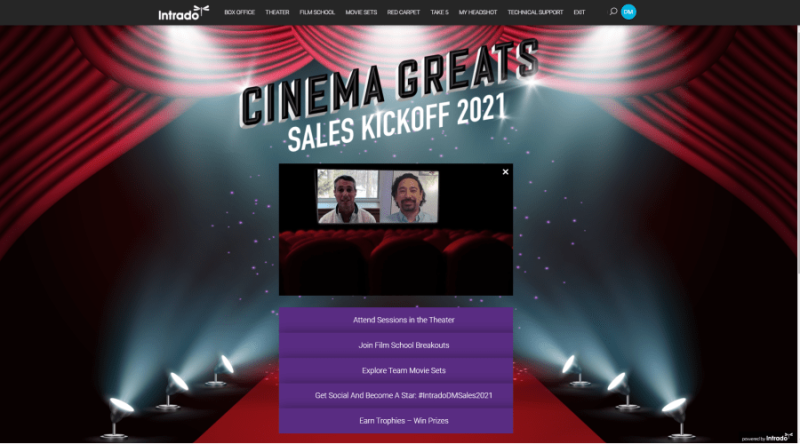Virtual events have gone from “nice to have” to “business-critical.” And at Notified, we’ve seen this growth firsthand.
To help address these challenges, keep reading to learn ways you can successfully grow your virtual event programming.

First off, let’s take a moment to go over the different forms of online events to better acquaint you with the use case that will best fit your needs.
-
Webinars: Webinars are the online event most audiences are probably familiar with. Webinars typically run between 30 and 60 minutes and are designed for broadcasting one-way (one-to-many) communication from a host, or a panel of presenters, to large mostly view-only audiences. These are great for product launches, topic presentations, lead generation programs, executive town halls, shareholder meetings, quarterly updates and lectures.
-
Single Stream Event: Similarly, if you’re hosting a larger, one-to-many event on a single stream, a robust webinar will be your best option. When you need to keep an audience engaged for a long period of time, interactive features like chat and Q&A are essential, as is the use of live video. A single stream event is perfect for an in-depth training session or annual planning meeting.
-
Multi-Session Event: If you’re looking to quickly create an engaging environment where attendees can interact and view a variety of different presentations, then it’s time to start looking at virtual events. For a simple, one-day presentation featuring a variety of sessions, a DIY solution will serve you well.
-
Multi-Session Event with Networking: If your event is more complicated, and you’re hoping to host a series of programmed sessions for your attendees along with 1:1 video chat and video breakout rooms, then a supported virtual experience featuring engagement options is perfect.
-
Multiple Live Day Environment with Spaces: Finally, the most engaging (and time-consuming) form of online event is the immersive, multi-day virtual event. These environments allow you to create a fully customized experience with sponsor spaces, exhibit halls, networking lounges, gamification and other interactive features.
In this article, we’ll be focusing on the last three items of this list, each of which is a different form of virtual event.
Grow Your Event Calendar
As we’ve moved into 2022, it’s likely that most event professionals have hosted at least one virtual event or online meeting, and many are planning to increase their use.
In fact, 78% of marketers have indicated that they plan to increase budgets for virtual events. Event registrants are also more comfortable attending remotely and have become familiar with platforms and how to use them.

But with an uptick in usage comes significant stressors: virtual events are considered costly, time-consuming and challenging to organize on a large scale. Because of this, many teams find it difficult to dedicate the resources necessary to host more than one or two events per year.
Unfortunately, one or two events per year may no longer be enough.
It’s no secret that virtual events have become integral parts of everyday business. And as the world moves forward into the “new normal,” they will continue to be part of any successful outreach strategy.
In order to reach critical audiences, event planners must learn to grow and sustain a consistent schedule of virtual and hybrid events.
How can event planners grow their virtual programming without placing undue stress on their hardworking teams?
By utilizing a variety of virtual event solutions dedicated to each event’s overall mission and goals.
Not every event needs to be treated as an all-hands-on-deck situation. Learning to triage your resources will be critical to the success of any upscaled virtual event program.
At Notified, we offer unique virtual event packages tailored to each event’s specific needs, so you can prioritize and plan your time, money, and energy expenditures accordingly:
-
Virtual Event Expert: Deliver an immersive experienceemulating an in-person conference with event spaces, sponsorship opportunities, programmed sessions, and engagement tools. Can support 200,000+ global attendees.
-
Virtual Event Essentials: Deliver a multi-session event with networking capabilities and key event spaces.
In the following, we’ll explain more about each of these offerings and how they can help you grow and expand your events calendar to reach your target audiences.
Virtual Event Expert: For Your Flagship Event
Many companies have flagship events critical to each year’s overall business success. For some, this may be an annual sales kickoff. For others, it may be a user conference or tradeshow. These are typically multi-day events involving several spaces and networking opportunities.
Whatever this event looks like for your company, it is likely that it encompasses a large percentage of your team’s annual budget and resource planning. In cases like these, event failure is not optional, so adequate attention must be paid.
Planning and executing mission-critical events requires a higher level of support and resources than smaller events.
This is where Virtual Event Expert comes in. Our premiere virtual event offering allows you to emulate a physical conference in an immersive digital environment with spaces, sponsorship opportunities, programmed sessions and engagement tools.

Everything your audience (and internal stakeholders) expects from a physical conference is present in Virtual Event Expert:
-
Sponsor booths: Provide valuable exposure to sponsors with dynamic booths designed to highlight individual brands and engage attendees with customizable, downloadable content.
-
Exhibit halls: Encourage users to interact with informational content, videos and interactive features in a topic-organized exhibit booth.
-
Programming options: Fill your agenda with a mix of live, simulive, and on-demand sessions, and allow your attendees to customize their experience by selecting which they’d like to attend (or watch on-demand).
-
Games and competitions: Delight attendees with gamification elements, including trivia, badging and prize centers, to foster in-event interaction and engagement and to keep attendees alert and focused throughout the day.
-
Promotions and display ads: Encourage certain actions among your attendees by including sponsor-supported ads, giveaways and program alerts.
-
Event metrics: Provide detailed reports to key stakeholders with in-depth reports including audience behavior, Q&A and chat logs and survey responses.
The immersive experience created in Virtual Event Expert is perfect for any flagship event, because it fosters real-world interaction. This can be true even as we move away from the social distancing requirements of COVID-19. Hybrid events, which blend elements of virtual with in-person events, will become more common, even as we are once again able to gather in large groups.
We’ll discuss hybrid events in more detail later in this blog.
Virtual Event Essentials: For Frequent Events
While it’s good to ensure that every event should be treated with equal parts care and effort, the reality is that business priorities dedicate the amount of time, effort and budget available for different events. Not every event requires multi-day programming and individual spaces.
To give you flexibility, Virtual Event Essentials is the perfect package; it offers attractive, robust experiences in both 2D and 3D environments, so you can create engaging, streamlined events.

Virtual Event Essentials removes some Expert features which might be considered extraneous for more everyday events, while encouraging more engagement with features meant to drive your business forward. This allows your team to hyper-focus on each event’s individual mission without bogging you down with unnecessary additional features.
Some highlights of the Virtual Event Essentials package include:
-
Customizable email communications: Send confirmations, reminders and post-event follow-ups with messaging tailored to your individual event.
-
Programming options: Fill your agenda with a mix of live, simulive, and on-demand sessions, and allow your attendees to customize their experience by selecting which they’d like to attend (or watch on-demand).
-
Carbon savings calculator: Empower your audience to “go green” by displaying the amount of carbon saved by each individual attending virtually instead of in-person.
-
Video engagement features: Foster interaction among your attendees and encourage breakout participation with 1:1 video chat capabilities and scheduled video breakout sessions.
-
Language localization: Engage a global audience with adaptive offerings available in 19 different languages.
Virtual Event Essentials is perfect for any team looking to upscale their virtual event programming without incurring too much additional cost.
As your team looks to increase the amount of virtual events on your calendar, planning a rotating schedule of high-level Expert events supplemented with Essentials events allows you to prioritize your most critical deliverables while continuing to offer engaging experiences at every turn.
Top 3 Use Cases for Virtual Events
Now that we’ve provided an overview of the various solutions offered to event planners, let’s look at a few of the most common use cases.
Virtual events are known for being powerful marketing tools for acquiring customers. However, they are not limited to this specific audience. They’re also great for engaging and informing employees and investors.
Here are a few other ways you can engage your target audiences with virtual events:
-
Sales Kickoffs: Virtual events allow you to reach your global sales team without removing them from the field. In this use case, engagement is critical. Provide your attendees with opportunities to interact with the platform and one another through gamification, competition and fun.
-
Virtual Conferences: Conferences are great ways for global communities to get together, network and drive their field forward. Hosting an immersive, engaging virtual event allows these attendees to interact with one another on a far greater scale than can be achieved at a physical conference.
-
Virtual Investor Days: Going virtual does not mean sacrificing a high impact, interactive online experience for investors, analysts and the media. Hosting a virtual investor day allows you to reach a larger audience with increased attendance, all while decreasing costs and eliminating carbon emissions.
Expand Your Reach with Virtual Events
As virtual events continue to grow in popularity and prominence, a few questions remain. Specifically, event planners may wonder if going virtual will eliminate engagement or somehow hinder overall attendee satisfaction.
The answer is a resounding “no.”
If we’ve learned anything from the last year, it’s that physical proximity does not necessarily dictate overall engagement. Adding a virtual component to any event allows you to reach a larger audience unencumbered by the physical limitations of space or the expense (and environmental consequences) of travel.
Take for example our customer Amie Caudle, Director of Professional Development at Rowan-Salisbury School System.
Amie had a vision of hosting the school district’s annual THINK Conference virtually, an event usually held in-person. She didn’t want to host another Zoom meeting; she wanted to deliver an engaging experience to the teachers. featuring guest speakers and networking opportunities for educational professionals. This year, COVID-19 and social distancing requirements dictated a pivot from in-person to virtual.
Utilizing Virtual Event, Amie was able to build an engaging virtual environment for her attendees which far surpassed the usual Zoom experience they had grown accustomed to.
And she was able to engage more people in the process.
Whereas physical limitations at an in-person venue typically limited her attendance to around 250 people, hosting the event virtually allowed her to engage over 1,500 teachers and educational professionals – that’s a 600% increase in attendance, all by switching to a virtual platform.
Further, virtual events allow you to track your attendees’ engagement within the environment. Whereas it is impossible to measure attendee interaction at an in-person conference, virtual events track every piece of an attendee’s behavior, from downloaded content to time spent viewing specific presentations. This allows you to tailor future events according to attendee actions as well as track who was more engaged in your overall program.
Businesses have come to recognize that virtual events allow them to reach more people with fewer limitations; these immersive experiences foster active engagement on an unprecedented scale; something we cannot achieve in a conference hall setting.
The Future of Events Is Hybrid
The world will continue to rely on hybrid offerings to reach and engage global audiences, even as we anticipate a return to in-person meeting and working environments. Combining the virtual with the physical allows you to create immersive, engaging events for attendees and reach a wider audience And build a global community.
In the future, your attendees will expect virtual additions to every conference they attend.
Event planners are embracing the new reality and exploring new ways to engage audiences. . An effective calendar will contain a balanced blend of virtual, hybrid and in-person events, allowing you to reach the widest audience possible.
The benefits of creating hybrid events will allow businesses to grow far beyond current limitations; this is simply not possible without virtual events.
Learn more about Notified’s end-to-end event platform by clicking here.
